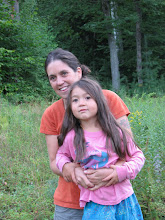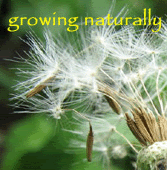
Self Heal Prunella vulgaris Breaking it down.......
Laminaceae (mint) Family
Other names: Prunella, All-Heal, Hook-Heal, Self Heal, Slough-Heal, Brunella, Heart of the Earth, Blue Curls, Carpenter-weed, Common Selfheal, Consolida Minor, Lance Selfheal, Sicklewort, Woundwort, Xia Ku Cao Dragonhead, Hercules' Woundwort, Hook-Heal, Xia Ku Cao
Prunella Vulgaris is found just about anywhere.....growing in waste ground, grassland, woodland edges, usually on basic and neutral soils.
Taste: mineral salt, mild bitter
Energy: Cool and Dry
Prunella Vulgaris is an edible and medicinal herb, she can be used in salads, soups, stews, or boiled as a pot herb.
Over the centuries she has been used as medicine, on just about every continent in the world, and for just about every ailment known to man, Prunella is something of a panacea. This last line makes the apprentices and many herb students crazy. I hear them all saying "how will be ever learn the best way to use this herb? How can Self Heal be good for sooooo many things. Most apprentices over the year find it easier to use herbs that have fewer and more specific uses such as Boneset. Again and again I urge them not to give up on these herbs that seem to be used for everything. The best way to learn is to just slowly familiarize your self with the herb: collect information, draw the herb, sit with the herb, try every recipe you can find, if it is an edible eat it raw, eat it cooked.....keep a journal.
Western Classificationa: alterative, antibacterial, anti viral, antipyretic, antiseptic, antispasmodic, anti-oxidant, astringent, carminative, diuretic, febrifuge, hypotensive, nutritive, stomachic, styptic, tonic, vermifuge and vulnerary. (It is really important to familiarize yourself with these terms, hint hint)
Prunella is an astringent herb that has been used extensively in the healing of internal and external wounds. There is a simple use that everyone can try!
Plant Constituents are Betulinic-acid, D-Camphor, Delphinidin, Hyperoside, Manganese, Oleanolic-acid, Rosmarinic-acid (more than in rosemary!!) , Rutin, Ursolic-acid, and Tannins. (It is worth noting this info though in the beginning it really does not mean a lot unless you are a chemistry buff)
Prunella is taken internally as a medicinal tea in the treatment of fevers, diarrhea, sore mouth and throat, internal bleeding, and weaknesses of the liver and heart. Prunella is thought to be effective in treating Grave's disease and has also been used as an immune system booster. Clinical analysis shows it to have an antibacterial action, inhibiting the growth of pseudomonas iatragenic hospital infections) , Bacillus typhi, E. coli, Salmonella, Mycobacterium tuberculi, which supports its use as an alternative medicine internally and externally as an antibiotic and for hard to heal wounds and diseases. It has also shown promise in research for cancer, AIDS, diabetes, and more recently the Herpes Virus. The research done for herpes shows that salves made with Prunella are useful in stopping outbreaks.
Simple ways to start using Prunella:
Gather flowering tops, and dry in small bunches for later herb use. Store in cool, dry, dark, place for best shelf life. Alternatively you can tincture it fresh.
A cold water infusion of the freshly chopped or dried and powdered leaves is a very tasty and refreshing beverage.
A weak infusion of the plant is an excellent medicinal eye wash for sties and pinkeye.
Medicinal tea or infusion: Add 1 oz. dried or fresh herb to a pint of boiling water, steep till cool, take in ½ cup doses, sweetened with honey, as a general immune strengthener. Can be used to help recover strength after illness.
If you are interested in furthering your study of individual plants our Materia Medica class will be starting up again in September. Just email me and I will put you on the list.
Please be aware that this information is provided is meant to supplement the care provided by your physician. It is neither intended nor implied to be a substitute for professional medical advice.










No comments:
Post a Comment